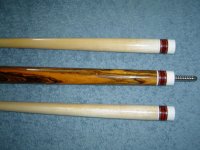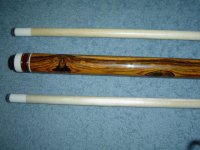I took the liberty of cutting out and skipping your snide comments and will reply to the substance in your post.
Quote:
But neither does a bow. Leave a bow on a table, and it will never shoot an arrow. However, some bows shoot arrows further with the same exact pull.
100% agree. Certain bows have different characteristics that offer the possibility to enhance performance. However, the bow alone does not determine how far it shoots an arrow. The archer has to aim the bow at a certain trajectory, hold it there steadily, release the string smoothly...all of these things will affect the "performance".
The things you just mentioned are all variables. Variables that can be eliminated by putting the bow in a machine and having it shoot the arrow. Therefore, isolating the item of interest - arrow velocity.
However, your analogy is the best one yet. We could certainly talk about qualities that make one bow different than another. There is no question that a modern composite-material compound bow is far superior in nearly every way than a 150 year old wooden bow. While those differences are much larger in degree than the differences between cues, they are the same types of differences. So if you stick with your initial *claim* that custom cues are not better than production cues, then like I said before I agree with you. However, as I and many others also said, the *likelihood* of getting a custom cue that performs at a high level with a solid hit is greater than getting a production cue with the same qualities.
That's fair. Moreover, I believe this was already covered much earlier in the thread where I myself did state that I agree there is a higher chance of getting a cue that plays optimally by going custom. I followed up that statement by saying that there are lemons in both customs and production cues; therefore, each and every cue, regardless of it's origin, must be inspected and tested to determine it is not defective. Defective, meaning, there is something wrong with it that would cause it to perform in an inferior way. Such as, inconsistency. Imagine a shaft that produces different results given the exact same hit on the cue-ball. That would be detrimental to the player's game as it induces a factor of randomness.
The gist was that some people believe that their cue, or custom cues are somehow superior in playability - merely because of the fact it is custom made. Without specifying what physical characteristics causes that to occur, it's safe to say that such a claim can only be treated in one of two ways. 1. There is something about the cue, it just remains undiscovered (highly unlikely) 2. It's just in that person's head, and it's BS.
Quote:
Does the custom cue offer some measurable performance increase over a production? I say no. Not based on the current methods and materials.
And are you basing this on anything other than your own assumption? Are you telling me that you do not believe that there are physical, measurable, and demonstrable reasons for the differences in *hit* between cues?
What I'm telling you is that "hit" is a subjective term, and as previous posts have covered, at best it is no more than an item of personal preference leading to either or both physical and psychological comfort with a cue.
As for methods and materials. We can start with the shaft.
For one, we should exclude the tip. Since custom cue makers don't manufacture the tips (with a few exceptions). Typically, the same types and brands of tips are used as are used on production cues.
There is the ferrule. Ferrules can be made of various materials. But some are more common than others. Just go to Atlas Billiards and take a look at the various ferrule materials. Of these materials, most are common and represented in both the custom and production cue world.
Ferrule size, shape and form. Some are longer, some shorter, some thinner, some thicker. They also vary on how they are fastened to the shaft. The size of the tenon, whether it is threaded or not, what kind of threads etc. How is it glued on? And with what kind of glue?
Then there is the shaft. Being wood, you can't make it - only select it. There are different ways in which they are seasoned. How is that shaft turned down? What kind of taper?
I don't need to go on and on. Generally, these features and methods are all very similar. Again, as stated earlier in the thread - the differences are small, likely to the point of insignificance relevant to say, the use of an all stainless steel shaft, or some other significant deviation from common modern cue design.
I then ask, why and what causes the custom cue to perform better - particularly when they are of the same materials and design?
Take the video of the McDermott factory someone posted earlier. Those shafts are not made from particle board. They are made from a good quality maple. The taper of those shafts is similar to the taper of most cues. The ferrule isn't some piece of crap nor is it fastened to the shaft in a way that differs from what most custom cue makers use. Chances are, that ferrule fastening method was likely innovated by some cue maker at some point in the past.
The only thing that separates most quality production cues and custom cues is that custom cues are made in a smaller quantity with less automation. I'm not even touching upon any of the personal preference stuff, we went over that 10x already. It isn't germane to the point of this thread.
Someone made the claim earlier in this thread that the automation leads to variances in tolerance that do lead to a decrease in performance. And that production cues can never be as tight as a custom. And due to this, they are inferior. Of course, they offered no example whatsoever. Only that tighter tolerances are better. That's an agreeable generalization. I disagree with the first statements though. There are plenty of production cues that roll perfectly straight. They are made with high quality maple shafts. Have properly and securely fastened ferrules. Are seasoned and will not warp. What is it about the fact that it was mass produced that makes it inferior? I already discussed how there are good and bad examples of cues out there.
My comparison is between a custom cue and a production cue of good quality, meaning, not defective, straight - so forth and so on.
There is no difference. Some people insist there is. Likely because they want to perpetuate the myth that because a cue maker's hands made it - it is better. These are folks who are subscribing to a form of superstition.
Let's go back to your arrow analogy because it was a good one. Lets assume that there are two bows that are identical in every way except one. One of them has a few little red lights on it in view of the archer. This bow has concealed within it a tiny radio receiver which when triggered activates the light. Sensors on the bow transmit to a computer the exact angle that the bow is held, the exact string tension, etc. When the computer has calculated that the string tension is optimal, the little red string tension light comes on. When it has calculated that the bow is held at the optimal angle to achieve the greatest distance with that string tension, then the trajectory light comes on. This way, the archer receives feedback from the bow that offers a potential increase in the quality of his performance.
So here's the question: is this high tech bow better than the one without this system?
Would it offer a performance benefit?
Yes, in that it would be one that stems from preference. Whether it be a certain "hit" that, in some way or another, in the mind of the player "talks" to the player as to what is optimal - that is still preference. How the cue ball interacts with a impact on the tip/ferrule/shaft/joint/butt of that cue is the same, regardless of what the player "reads" into the "hit"...
No, in that the bow is still only capable of producing so much arrow velocity or accuracy given the same draw, same arrow etcetera. All other variables made constant.
It all depends on what you're talking about. In your paragraph above, you again try to intermix personal preference and the performance gains a player achieves due to having those preferences met with the cue's/bow's performance characteristics.
This is a circle you keep going in. At one point you clearly stated that the two cannot be separated. I disagree and stated multiple times why. I believe that there are characteristics of a cue's performance that can be measured.
One example, as already stated multiple times in this thread, is cue ball velocity in the case of a break cue. This can be measured. When a cue is swung by a machine or robot, and compared to others tested in a similar way - variables are eliminated and constants are created and it can be determined that there are properties about a particular cue that causes it to launch the cue ball faster than another cue. If generating more cue ball speed is regarded as a value in open breaking, and a certain cue generates let's say 5% more speed than anything else at any speed it is swung - then the player using it will be able to achieve higher break speed velocities.
It's that simple.
The same could be done for other factors such as accuracy, spin, squirt...
It can be determined that there's no difference. If there's no difference, there must be a reason. Either all the samples lack something, or all the samples are basically the same in design, material and methods to not lead to a difference.
The above is what I'm interested in when it comes to this thread. Not this over-done long winded side-track (almost a thread-jack) based on personal preferences.
This doesn't go out to just you, but to anyone and everyone who is in the "I got my custom cue because I have preferences" crowd. You are not the subject of my questions nor skepticism.



